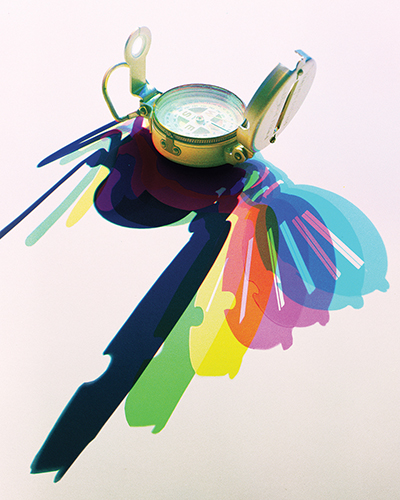February 24, 2021, 6-8pm
Featuring Caleb Charland with Richard Alan Cohen and John Hensel

It can be said that photography was birthed from science and throughout history they have maintained a symbiotic relationship. Camera construction in relation to machines and physics, chemical processes, compounds reacting with light, the development of optics and lenses, X-rays, and the wider contributions of photography to every aspect of modern culture, document and art.
It is with this long history in mind that we celebrate the strong connection of Photography and Science with the work of Caleb Charland whose every piece begins as a question of visual possibilities and develops in tandem with the natural laws of the world, “For me, wonder is a state of mind somewhere between knowledge and uncertainty. It is the basis of my practice and results in images that are simultaneously familiar yet strange… Energy vibrates in that space between our perceptions of the world and the potential the mind senses for our interventions within the world. This energy is the source of all true art and science and it allows us to sense the extraordinary in the common.”

Caleb Charland grew up in rural Maine and earned a BFA in photography from MassArt in 2004, an MFA as a Trustees Fellow from the School of the Art Institute of Chicago in 2010, was a participant at the Skowhegan School of Painting and Sculpture in 2009, and in 2016 he received the prestigious Pollock-Krasner Foundation grant in photography. Caleb’s work has been exhibited nationally and internationally in venues such as Michael Mazzeo Gallery, New York in 2011, Gallery Kayafas, Boston in 2013 and 2017, Sasha Wolf Gallery, New York in 2014 and 2016, and at Sarah Shepard Gallery, Larkspur, CA in 2019. He has been included in dozens of group shows including at ClampArt, New York, Brancolini Grimaldi in London, the New Mexico Museum of Art in Santa Fe, the Philadelphia Museum of Art, the Center for Maine Contemporary Art in Rockland, ME, and at the deCordova Sculpture Park and Museum. Caleb’s work is included in several major collections including at the Philadelphia Museum of Art, The Progressive Collection, and the Smithsonian American Art Museum. He has received press including coverage in The New Yorker, Collector Daily, Photo District News, and the Wall Street Journal, among others.

Richard Alan Cohen attended Bowdoin College where he co-majored in art and science. Having always maintained an avid interest in art, he has now transitioned from a 40-year career in cardiovascular research to being a full-time fine art photographer. Cohen’s photographs highlight his reverential relationship with the environment resulting in constructed imagined landscapes, providing a larger than life perspective to emphasize the importance of the environment. Manipulating light, color, and movement give his images an otherworldly appearance to set the subjects apart from ordinary reality in which they are threatened by climate change. Where photography and science intersect in Cohen’s work are in the aspects of discovering subject, light, and color in the field with the imagination and creativity involved in developing the editing and printing of each image. These actions have distinct similarities in Cohen’s two careers, photographer and scientist, seen in much of his work as grand landscapes have been re-contextualized from far smaller environmental details in order to magnify the importance of the fate of the environment.

John Hensel is a photographer in Cambridge, MA. His current work is engaged in embodying effects that defy our intuition but are rigorously grounded in science such as his series, On the Reversibility of Physical Law. This work engages with time as a concept in physics. All classical laws operate the same with time running forward as with time running backwards, yet we experience time flowing inexorably in one direction. As seen in, Configurations in Infinite Time, “…the work was created over an infinite duration (in a steady state universe), all possible states will fluctuate into and out of existence. Every step here taking longer than the lifetime of our universe.”
